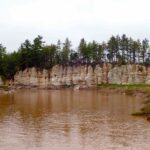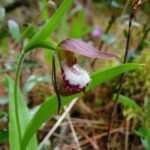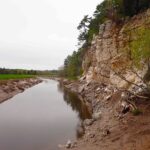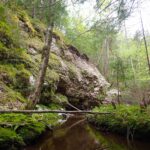Iconic gypsum cliffs and rare orchids
Iconic gypsum cliffs rising from the banks of the St. Croix River are part of an important ecological system based on alkaline soils, karst topography and mature forests. The Nature Trust protects three properties in this area, totalling nearly 400 protected acres of this globally rare topography.
Most karst around the world is formed from limestone, but here in Nova Scotia our most common karst is gypsum. In fact, according to renowned cave biologist (and Nature Trust supporter) Max Moseley, mainland Nova Scotia likely has the largest and best developed areas of gypsum karst in Canada, and amongst the best in the world – including these protected lands in St. Croix.
Nonetheless, karst features are threatened. In Nova Scotia, approximately 90% of the karst sites are located on private land, which makes the Nature Trust’s private land conservation work a critical tool to protecting these unique areas.
The area also boasts important habitat for many rare plants associated with calcium-rich soil conditions, including the Yellow Lady’s-Slipper and the endangered Ram’s-Head Lady’s-Slipper orchids.
The St. Croix River (Maqmekwitk in the Mi’kmaw language), which passes at the foot of the gypsum cliffs, is an important tidal river in the area. The streams in the now-protected area of the watershed will also help researchers better understand processes in streams in gypsum-dominated landscapes.
In summer 2024, we partnered with Transcoastal Adaptations’ Making Room for Wetlands project, CBWES Inc., and the Confederacy of Mainland Mi’kmaq to restore the flow of tidal waters in this important tidal wetland habitat. Climate change has increased the flooding that this area is subjected to, and deploying this nature-based solution will ultimately increase the climate resiliency of the entire system.
As part of this project, this site has been named Wepe’k Mtasoq (meaning White Cliff in Mi’kmaw, named by Michael McDonald of Sipekne’katik First Nation).
After careful site assessment and a thorough design process, the dyke was strategically breached to allow for natural tidal flow and to reconnect the site to the broader St. Croix River estuary. The site will be monitored to ensure it is recovering as anticipated and keeping pace with sea-level rise. Read more about the Wepe’k Mtasoq project.







